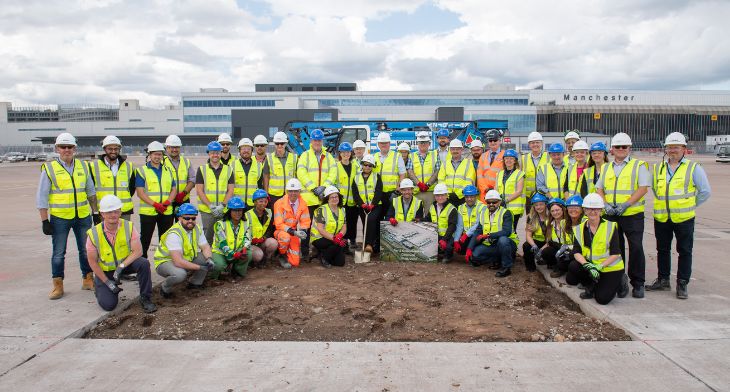


Manchester Airport has begun work on the next major phase of its £1.3 billion transformation programme. Construction firm Mace has been instructed as the lead contractor to start work on a new pier, which will connect to Terminal 2.
The pier is described as the most significant new structure being built in the second and final phase of the transformation programme, which was first announced in 2015 with a 10-year vision for completion. Mirroring Pier 1, which opened in 2019, the new pier will accommodate 12 spacious boarding gates and flexible aircraft stands for next-generation aircraft. It will also be equipped to handle the Airbus A380.
The first phase of the programme saw Terminal 2 more than double in size, with the new facility opening in 2021. This next phase will see the original building upgraded with a second security hall and a new-look extended departure lounge, together with reconfigurations of the airfield to make operations more efficient.
Upon completion in 2025, around 80% of all passengers will use the expanded Terminal 2, which will also house 27 new shops, bars and restaurants, including a high-street style shopping area, a champagne bar and a food hall.
Work on phase two started on Monday 19 June, with Manchester Airports Group (MAG) CEO, Ken O’Toole, saying: “We are pleased to be beginning work on what is a major milestone in our transformation of Manchester Airport.
“Our £1.3bn transformation programme is the largest investment ever made in Manchester Airport, and will create thousands of jobs, revolutionise the customer experience and ensure we connect the North to even more global destinations in the years ahead.
“We are already seeing the benefits of the first phase of our investment, with passengers and airlines providing excellent feedback on our extended Terminal 2. Through this second phase, we will deliver yet more improvements to the passenger experience and cater for the growing network of airlines operating from Manchester.”
Construction of the new pier will utilise cutting-edge techniques to reduce the amount of embodied carbon emissions by up to 40%, including pre-casting the concrete used and minimising the amount of excavation work required through the use of an innovative piling solution. Mace will use a “kit of parts” approach to build the pier, manufacturing nodes and links off-site, allowing the on-site construction elements to be completed more quickly and with minimal disruption on the airfield.





